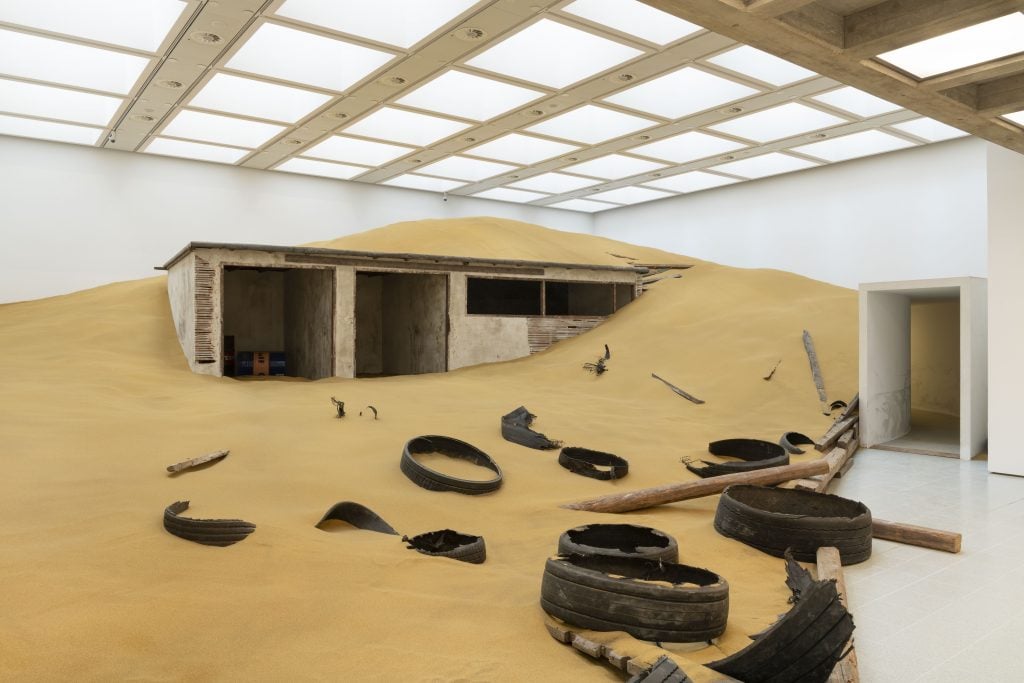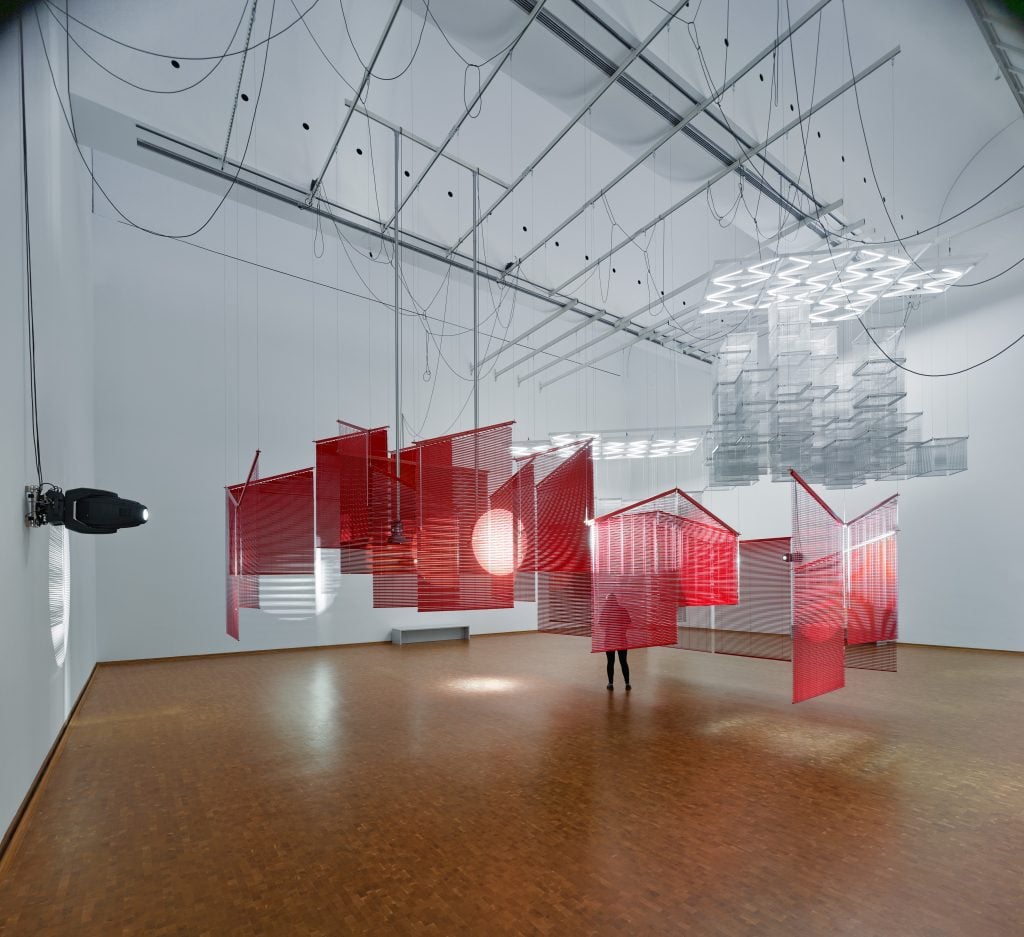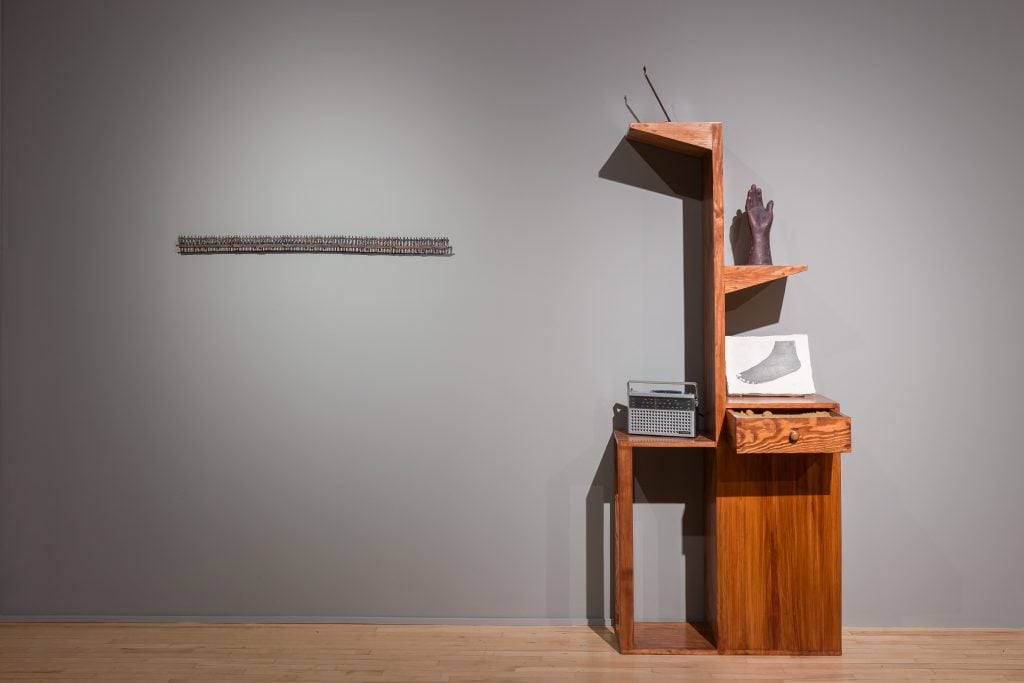Up Next
Curator Yung Ma on Making ‘Impossible’ Exhibitions Into Realities
The curator Yung Ma reflects on his ambitious undertakings and why he wants to emphasize common ground in his shows.

The curator Yung Ma reflects on his ambitious undertakings and why he wants to emphasize common ground in his shows.

Vivienne Chow

In less than three years since he joined Hayward Gallery as curator, Yung Ma has achieved what some of his peers could only dream of. Together with his team at the London institution, Ma successfully brought Mike Nelson’s complex, large-scale immersive installations to life in the breathtaking survey of the British artist’s oeuvre last year, a task that was widely seen as mission impossible. The show impressed some of the U.K.’s toughest critics, and was embraced by the public—tickets were sold out and long queues were spotted at the gallery.
Ma has made a name for himself as a curator who pushes the boundaries of what an exhibition can be, particularly when it comes to challenging conceptual work and the significance of film and video. While associate curator of moving image at M+ in Hong Kong he made significant developments within the collection, and also co-curated the city’s 2013 exhibition in Venice, a collateral event of the Venice Biennale. “You (you),” a solo exhibition by Lee Kit, Hong Kong’s rising star at the time, delighted critics and crowds alike with a sparse, minimalistic, but emotionally intimate installation comprised of mundane objects, moving images, sound, and paintings. It signified a shift in what Hong Kong contemporary art could be, particularly when presented on an international stage.
A decade later (following a tenure at the Centre Pompidou that included producing a solo show by multimedia artist Cao Fei), working with Nelson allowed the intrepid curator to bring another decidedly complex artistic vision to life.
The experience of staging “Extinction Beckons” was intense, to say the least. Still, Ma wanted more. He became addicted to shouldering ambitious undertakings and making the impossible possible. The process also reinforced his beliefs in how he approaches curating an exhibition.
“When I told people that I was working on a survey with Mike, every single time without fail the reaction would have been like, you are insane,” Ma said in our interview at a recording studio near London Bridge, where we recorded our conversation for a special episode of Artnet’s “The Art Angle Presents” podcast. The exhibition not only reinstated some of Nelson’s most iconic installations and new works, but it also subverted the gallery space by transforming it into an eerie labyrinth as if it could transport visitors to a different dimension.

Installation view of Mike Nelson, Triple Bluff Canyon (the woodshed), 2004. Various materials. M25, 2023. Found tyres. Photo: Matt Greenwood. Courtesy the artist and the Hayward Gallery.
“We had a team of 35 to 45 people working on site building the installations every day. I’m still very proud of the team for pulling this off. It was almost like a dream: you did a show that was almost impossible, but somehow you managed to do it together with your team, and then you were happy with it. And then the public came and embraced the exhibition. Ultimately, that was a dream,” he said.
“Now that I got a taste of it, in terms of working on a survey that most people thought was impossible, I want to do it again. I got hooked,” he added.
These days Ma has been diving into this process again. After being promoted as senior curator last year, he’s been focusing on another survey show titled “Leap Year,” dedicated to South Korea’s pioneering artist Haegue Yang. Scheduled to open in October this year, the exhibition is branded as a comprehensive study of the artist’s expansive practice from early 2000s until now, and it is the first major career survey in London for the Berlin- and Seoul-based Yang. The show is also set to tour Europe in 2025.
The approach to Yang’s exhibition, Ma said, will be distinctively different from that to Nelson’s show. “From a visual perspective and a spatial perspective, I’m trying to present a different side of Haegue. We are presenting a lot of major installations and sculptures from very well-known series. But I’ve also decided to show works from her earlier days,” he said, revealing that he is looking to reactivate a conceptual work titled The More the Merrier (2021), which involves the artist extending an invitation to guests from another circle and attend an event, as an act that explores alternative structures.

Installation view of “Haegue Yang ETA 1994–2018.” 2018 Wolfgang Hahn Prize, Museum Ludwig, Cologne, 2018. Photo: Museum Ludwig, Saša Fuis, Cologne.
When conceiving an exhibition, Ma conceded that he puts greater emphasis on the spatial narrative rather than the academic. “Maybe I’m old-fashioned, but I still think that when you are going to see an exhibition, being able to experience it in person is very important,” he said.
“I literally just close my eyes and imagine the space, where the work would go, and how I would feel about it. That’s how I begin. In my head, I often have the beginning and the ending [of a show] first, and then everything else just fall into place.”
His instincts regarding spatial and visual experience could perhaps be traced to his previous roles outside of the U.K. Coming from an international background with rich cultural exposures to East and West, Ma was previously an artistic director of the 11th edition of the Seoul Mediacity Biennale. This may explain why he enjoys watching TV and films—as well as artist films, videos, and experimental shorts—with a critical eye. He said it helps to reflect on his practice as a curator, how to conceive ideas and communicate with audiences.
“How do we utilize [popular culture] to try to connect with a wider public? Because what we do often is very niche. Compared to the power of TV, we are nowhere near that. Can we look towards that as a way to try to build a deeper, more meaningful connection with other people. It’s something I’ve been interested in, and I would like to explore further,” Ma noted.

Installation view of “Amol K Patil: The Politics of Skin and Movement” at the Hayward Gallery, marking the reopening of the gallery’s Heni Project Space overseen by the gallery’s senior curator Yung Ma. Photo: Mark Blower. Courtesy the artist and the Hayward Gallery.
It’s easy to understand Ma’s approach, considering that he has been a curator for publicly funded institutions, which face a general audience. Reflecting on the functionality of public institutions today, in face of the changing cultural and socio-political dynamics, institutions need to think about how to open up even more.
“I have always considered the role of contemporary art to be a catalyst to expand beyond the immediate,” he said, adding: “For me, what’s very important is to highlight the fact that we are quite similar. As humans, we can empathize, imagine, and understand each other.”